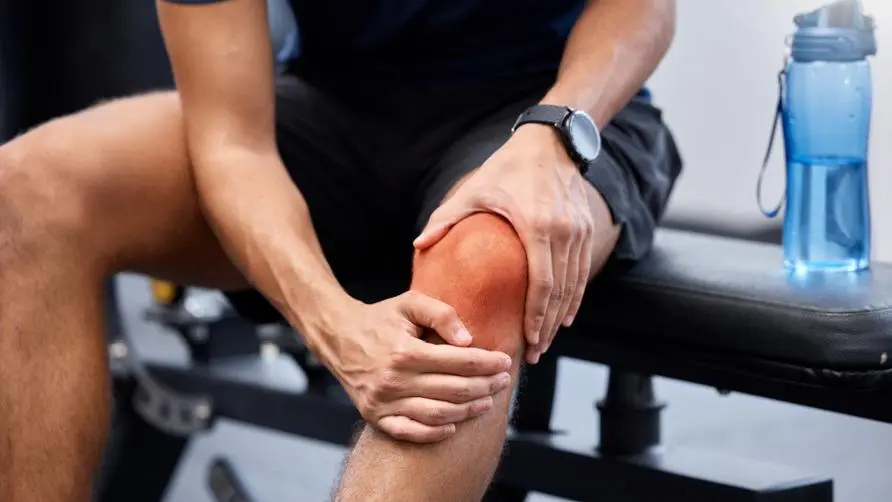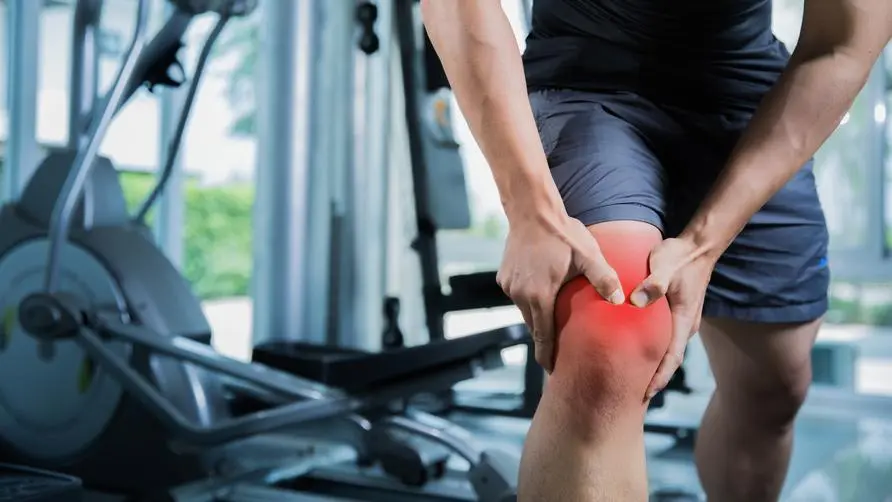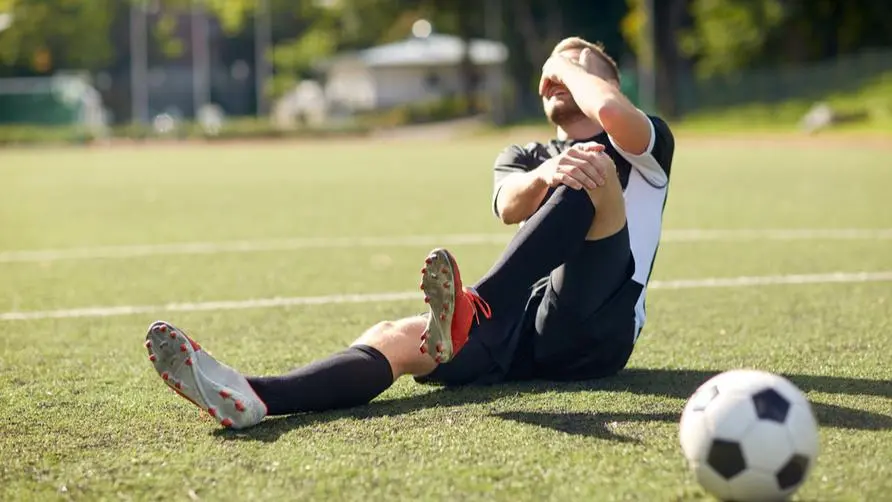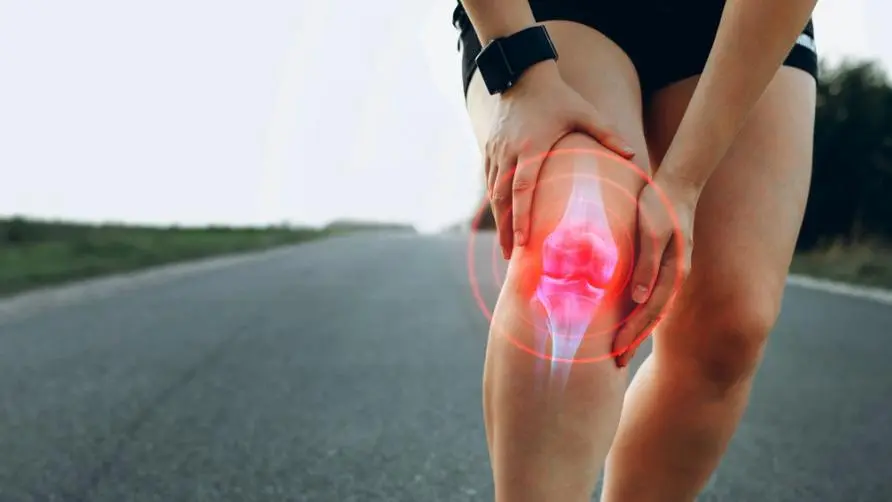The most painful knee-jerk move is not "going down the stairs"! According to a sports journal: 1 movement may cause the joints to bear "18 times the body weight"

As sports become more popular, people are increasingly paying attention to the impact of sports on knee joints. Which sports will cause more significant damage to the knees? Research published in the “British Journal of Sports Medicine” (BJSM) in 2022 shows that patellar pain and osteoarthritis are common clinical joint problems, and the reaction force acting on the “patellofemoral” part of the knee is an assessment of knee health. important indicators.
Going up the stairs hurts your knees more than going down the stairs? Study: Knees need to bear 5 times body weight when jogging
The patella (kneecap) plays an important role in knee joint function, especially during activities involving a large range of flexion (e.g., squatting, walking up and down stairs). The tension between the quadriceps muscle and the patellar tendon drives the patella against the surface of the distal femur, producing a reaction force at the average contact point, which is the “patellofemoral joint reaction force (PFJRF)” explored in this study.
A research team from La Trobe University in Australia searched 6 sports literature databases through three keywords: “patella”, “force load” and “activity”, screened 227 studies and conducted a systematic review of 71 documents. The research team also recruited 63 subjects from the above data (56 healthy and 7 with patellofemoral pain syndrome) to test the reaction forces of different exercises on the patellofemoral joint.
Through data analysis of the subjects’ activity status, the research results confirmed that the reaction force on the patellofemoral joint was indeed increased when knee flexion activities involving large angles were performed. Based on the four most common activities that people usually perform, the reaction forces required by the patellofemoral joint are as follows:
Walking: 0.9 x body weight (kg).
Climbing stairs: 3.2 x body weight (kg).
Descending stairs: 2.8 x body weight (kg).
Running: 5.2 x body weight (kg).
The knee can withstand a reaction force up to 18 times the body weight. Pay attention to “1 movement” during daily activities and rehabilitation treatments.
Study author Harvi F. Hart said that the reaction force of the patellofemoral joint will increase due to the increase in quadriceps strength and knee flexion, causing the pulling angle between the quadriceps and patellar tendon to become severe. Certain daily activities and physical therapy exercises may expose the patellofemoral joint to higher reaction force intensities, such as squats involving higher knee flexion angles and greater drive demands on the quadriceps. As for the reaction force range reported in “physical therapy rehabilitation”, it is between 1-18 x body weight, for example, squat is 1-18 x body weight, lunge is 3-6 x body weight, and cycling is 1-7 x body weight. , and jumping 9-11 x body weight.
Are there differences in the reaction force of the patellofemoral joint between healthy individuals and patients with patellofemoral pain and osteoarthritis? Hart noted that weighted averages of patellofemoral reaction forces suggest that peak reaction forces may not be elevated in individuals with patellofemoral pain when walking, running, and ascending and descending stairs; a direct comparison of patellofemoral pain in individuals with healthy individuals Results from the few available cross-sectional studies suggest that individuals with patellofemoral pain have lower peak reaction forces while walking and ascending and descending stairs, whereas results from the two running studies were inconsistent.
Overall, the results of the study showed that compared with healthy subjects, there was no difference in the peak reaction force of patients with patellofemoral pain when walking and climbing stairs, but the peak reaction force of patients with patellofemoral pain was lower when descending stairs. Overall, peak reaction forces on the patella do not appear to be elevated in individuals with patellofemoral pain or patellofemoral osteoarthritis.
Hart believes that the research results can be used by clinicians to provide more precise prescription treatments and physical interventions for patients with patellofemoral pain and osteoarthritis. However, future larger studies using more consistent methods and longitudinal data are needed to understand the role of patellofemoral reaction forces in the development and progression of patellofemoral pain and osteoarthritis.
Don’t do these exercises if you have injured your knees! Severe fear of meniscus injury and ligament rupture
If you have osteoarthritis or patellofemoral pain, you should avoid activities that can easily cause knee joint injuries, and follow the prescriptions of your doctor and physical therapist for rehabilitation. Research shows that the following exercises may cause severe damage to the knee joint, and the public should be relatively careful:
1. Football
Research and analysis by the University of Sao Paulo in Brazil shows that the proportion of sports injuries caused by football is 38%, ranking “first among all sports.” Common sports injuries caused by football include meniscus injuries, posterior cruciate ligament rupture, and lateral collateral ligament injuries of the knee. It is mostly related to insufficient muscle strength, failure to warm up properly, poor joint extension and knee damage caused by sudden impact.
2. Basketball
A study in the Journal of Sports Science and Medicine (JSSM) pointed out that knee joint pain is the most common acute injury in basketball and is related to foot impact during running or quick changes of direction when dribbling. Experts say the more often basketball players dribble toward the basket, the higher their risk of knee injury. Severe cases, such as meniscus tears and anterior cruciate ligament rupture, may require months or even years of recuperation.
3. Volleyball
A paper published in MDPI pointed out that nearly 80% of the scores in volleyball games are the result of jumping at maximum intensity. On average, volleyball players jump nearly 100 times in a game and perform a large number of sprints over a distance of about 10 meters, which increases the risk of knee injuries for volleyball players. The most common types of injuries are anterior cruciate ligament rupture and knee joint swelling caused by landing on one foot. .
4. Close combat (Taekwondo, Judo, Brazilian Jiu-Jitsu)
Research conducted by the University of São Paulo in Brazil shows that close competitive sports such as Taekwondo, Judo and Brazilian Jiu-Jitsu require a large amount of leg lifting movements, which can easily lead to knee meniscus cartilage tears, jumping knee (patellar tendonitis), patellar instability, etc. harm.
5. Parkour
Parkour is a street gymnastics sport that has emerged in recent years. It requires continuous jumping, hurdling, climbing or rolling and other difficult movements to continuously shuttle between buildings. It is regarded as one of the most difficult sports. A paper in the “Journal of Sports Science and Medicine” points out that landing errors during parkour will increase the chance of knee injuries, including knee contusions, semilunar cartilage injuries, and posterior cruciate ligament injuries, which are all common.
Source:
May the force be with you: understanding how patellofemoral joint reaction force compares across different activities and physical interventions - a systematic review and meta-analysis
Further reading:





